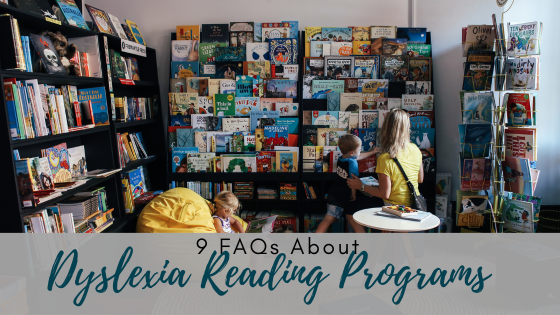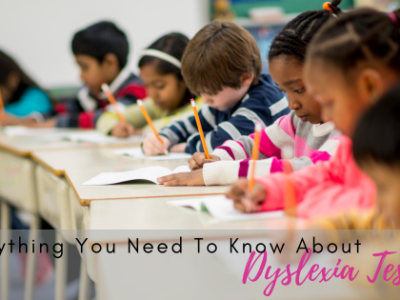
9 FAQs About Dyslexia Reading Programs
Reading can unlock a whole new world for new readers. Building reading skills is such a foundational part of education. However, when your child faces obstacles to reading in the form of a learning disability like dyslexia, it can be frustrating for both the student and the parents. If your child is struggling with the effects of dyslexia, you’ll want to find the best ways to help them learn to read. When it comes to helping students with dyslexia, there are so many different resources and solutions to explore. Some are truly more effective than others. Read on to learn the answers to 9 FAQs about dyslexia reading programs.
- How do dyslexia reading programs work? For learners who do not have a learning disability, reading may seem to come easy. For students who have dyslexia, the different processes that go into learning to read become a lot more apparent. Dyslexia reading programs—when they’re working effectively—tend to break down the skills that are needed for reading. Students work on skills in areas such as decoding, vocabulary, comprehension, and fluency. The best programs use an multisensory approach to structured literacy that is founded in the science of reading.
- What are some of the benefits of dyslexia reading programs? The obvious answer here is of course the major benefit of effective dyslexia reading programs: better reading skills. In addition to this, there are added benefits such as improved confidence and higher self-esteem. At Dyslexia on Demand, we place a focus on teaching students the importance of additional skills like responsibility, independence, and self-advocacy.
- What are the options for different dyslexia reading programs? There are different approaches to dyslexia reading programs. Some of these programs are computer-based, game-based, or text-based, meaning they use either technology and games or leveled reading texts to supplement the professional help that students with dyslexia should be receiving. However, one of the most tried and true methods, Orton-Gillingham, is a multisensory structured language teaching approach. It is considered to be one of the most effective ways to work with students with dyslexia. At the core of Orton-Gillingham is the principle that readers with dyslexia find the most success when they learn to connect sounds with letters and words.
- Are dyslexia reading programs conducted in person? Many dyslexia tutors and therapists offer in-person sessions, but it is possible to have a very efficient and successful experience with dyslexia therapy online. At Dyslexia on Demand, it’s our mission to make dyslexia therapy accessible to students, despite geographical limits or qualified interventionist shortages. Online dyslexia programs can truly help readers who struggle with dyslexia by offering a therapeutic environment, free from distractions. To accompany this online instruction, students and their parents are given strategies to help them to become more successful in the classroom. For students who work with Dyslexia on Demand, parents become partners; they work as part of a team to help support their child’s reading journey at home.
- How long do dyslexia reading programs typically take to show results? The length of any dyslexia reading program depends mainly on each individual student’s needs. Effective programs will continue over the course of a few years. The academic language therapy that is offered at Dyslexia on Demand focuses on investing time in results. For reference, one of the dyslexia reading programs we use is based on a two-year curriculum.
- What is the difference between dyslexia tutoring and dyslexia therapy? In short, tutoring can range from working on things like spelling, phonics, and reading skills—based on academic needs. Therapy for dyslexia is clinically diagnostic and prescriptive. Dyslexia therapy, in contrast, can only be administered by a Certified Academic Language Therapist (CALT). Dyslexia on Demand goes deep into this topic with a comprehensive write-up.
- Who teaches dyslexia reading programs? While teachers, academic specialists, and tutors can all be the ones who administer tutoring sessions to students with dyslexia, dyslexia therapy requires a Certified Academic Language Therapist to guide students through sessions. CALTs earn a master’s degree, have 2 years of intensive training, gain 700 clinical hours, and pass a national certification exam. These experts offer skilled, one-on-one or small group intervention at Dyslexia on Demand.
- How often do students have sessions for dyslexia reading programs? This can vary for each student. Sometimes tutoring sessions might be weekly, but at Dyslexia on Demand, we aim to have students do therapy sessions with high frequency over a sustained period of time. Often, CALTs meet with students four hours per week over an average of two years.
- How can I find the right dyslexia reading program for my child? Are you curious about getting the best kind of dyslexia help for your student? Start with Dyslexia on Demand. The online dyslexia reading programs that we offer use the latest research in reading to help provide the best results for your student.
Reach out to Dyslexia on Demand. Discuss your options, and ask all your dyslexia-related questions when you book a free consultation.







